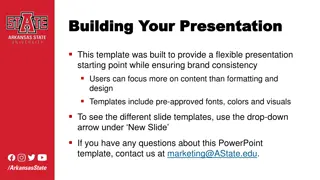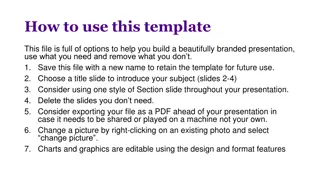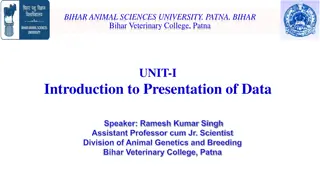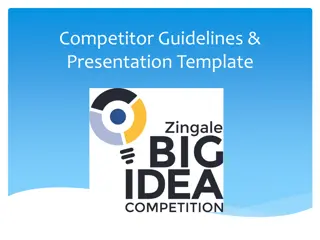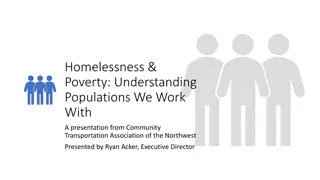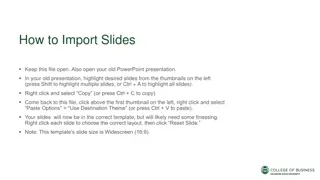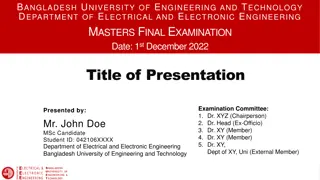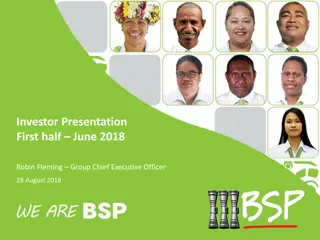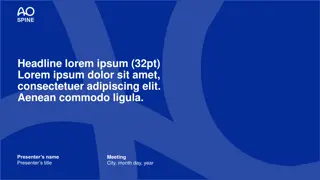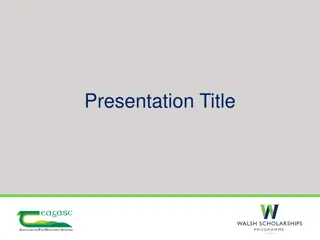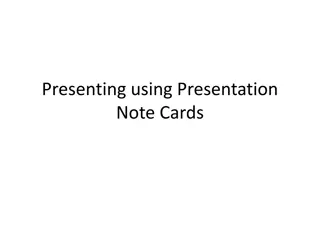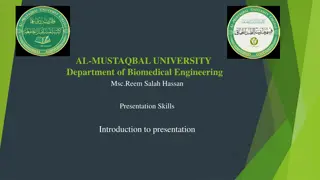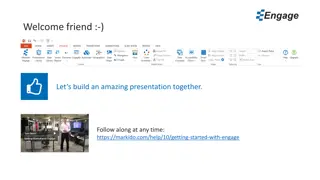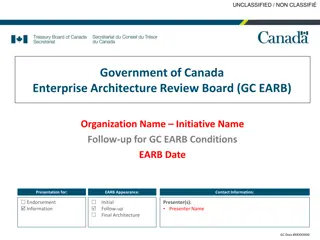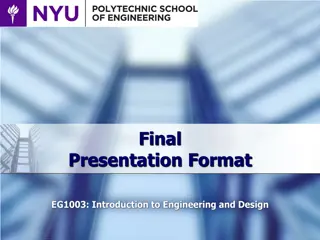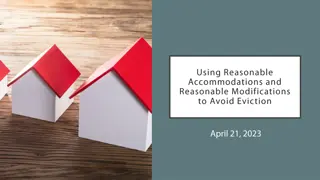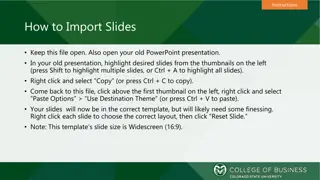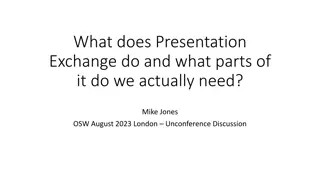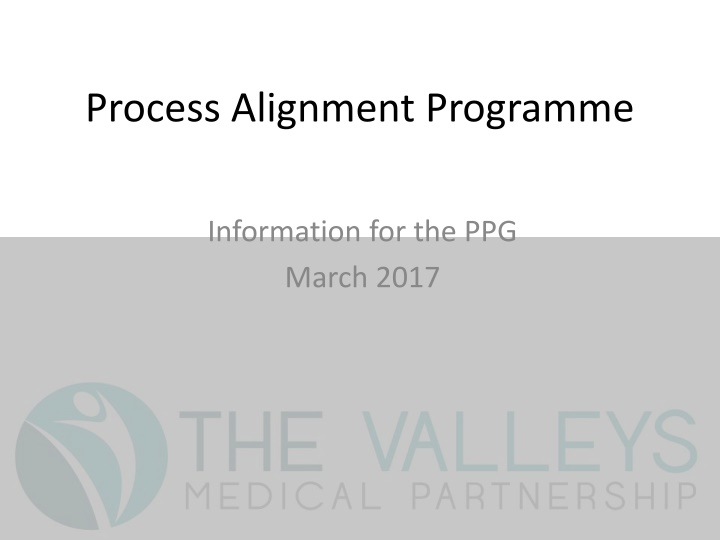
Effective Process Alignment Programme for Improved Healthcare Services
Enhance healthcare service efficiency with a process alignment program to address rising patient expectations and workload challenges. Review and optimize processes to save time and improve patient care quality, balancing the risks of change with the benefits.
Download Presentation

Please find below an Image/Link to download the presentation.
The content on the website is provided AS IS for your information and personal use only. It may not be sold, licensed, or shared on other websites without obtaining consent from the author. If you encounter any issues during the download, it is possible that the publisher has removed the file from their server.
You are allowed to download the files provided on this website for personal or commercial use, subject to the condition that they are used lawfully. All files are the property of their respective owners.
The content on the website is provided AS IS for your information and personal use only. It may not be sold, licensed, or shared on other websites without obtaining consent from the author.
E N D
Presentation Transcript
Process Alignment Programme Information for the PPG March 2017
What are we trying to achieve? Most effective / efficient way of doing the job. Same process at both sites where possible. Saving time to relieve the pressure we are under. Providing a better service to patients.
Why the need to change? The job is becoming more complicated There s more to do in the same amount of time Patient expectations are rising Risk of increase in complaints, patient safety issues, staff wellbeing, staff turnover
What are the risks of change It might not work! It might end up more expensive! Short term adverse effects while staff & patients get used to the new processes. People are generally uncomfortable about change.
Which processes have been reviewed? Incoming telephone calls. Admin tasks & associated outgoing telephone calls. Incoming documents & associated coding. Referrals. Practice Nurse annual review process. Medication queries, requests & reviews.
What is the process for reviewing each of these? Understand the current process at each site. Identify the problems associated with the current processes. Identify the priorities for the aligned process. Form the new process. Communication, & implementation. Review & modify as required.
Incoming Telephone Calls Until now, we have had no reliable data to measure the effectiveness of our telephone answering service. How much time is spent answering the phone? How does this work vary across the day and week? How many calls do we miss? How much resource do we need?
Incoming Telephone Calls Our phone system can automatically collect data on: Volume of calls by hour & day. Duration of each call. Waiting time for the call to be answered Number of abandoned calls We collated data for a 4 week period from 17/10/16 to 11/11/16 at both sites.
Incoming Telephone Call Audit Results Call Volume 7679 calls GV 36.22%; MV 63.78% 28% of all calls are received on Monday. 56% of Monday calls received before 12:00. The first hour on Monday has more than double the volume of the first hour on any other morning.
Incoming Telephone Call Audit Results Call Volume Tuesday & Thursday are the next busiest days. The first hour each day is the busiest hour. Monday afternoon & Thursday afternoon are the busiest afternoons. Call volume after 6pm is very low.
Incoming Telephone Call Audit Results Call Duration Average 1m 44s (MV); 2m 06s (GV) +21% Max 13m 40s (MV); 13m 51s (GV) Possible reasons for longer calls at GV: More demanding patients? More comprehensive? Slower staff / less familiar with SystmOne?
Incoming Telephone Call Audit Results Abandoned Calls 893 abandoned calls 12% (MV); 11% (GV) 1 in 8 calls During the worst periods of performance, over 15% of calls were abandoned.
Incoming Telephone Call Audit Results Abandoned Calls in excess of 15% Gosforth Valley 10am to 5pm (Mon) 9am to 3pm (Thu) Moss Valley 12noon to 4pm (Mon) 12 noon to 2pm (Tue) 1pm to 6pm (Wed) 9am to 3pm (Thu) 12noon to 1pm (Fri) 4pm to 6pm (Fri)
Incoming Telephone Call Audit Results Abandoned Calls reasons Gosforth Valley Only 1 person answering calls after 10am each day. This is insufficient at times. Moss Valley Substantial variation in number of people answering calls. Increased absence levels. Inadequate lunchtime cover.
Incoming Telephone Call Audit Results Waiting times A significant variation of waiting times was recorded at both sites. Looking at the average waiting times for lost calls, patients at Gosforth Valley generally waited for longer before abandoning their call than patients at Moss Valley. Perhaps this might contribute to Moss Valley having the slightly higher proportion of lost calls.
Incoming Telephone Call Audit Results General Observations Competency Some staff are more able to deal fully with patient enquiries, while other staff need to seek assistance or send additional tasks. Some members of staff would benefit from an investment of time in on the job training & development.
Incoming Telephone Call Audit Results General Observations Process Some members of staff carried out additional checks with the patient during the call. For example: To question the need for multiple appointments if they had more than one future appointment booked. To check any outstanding tasks to see if they could be resolved. Whilst this extends the length of the call, it does save time overall and provides a better service for the patient.
Incoming Telephone Call Audit Results General Observations Available Resource There was evidence of a significant variation of available resource at MV. E.g. available resource at 8am varied between 1 and 4. In order to consistently have an effective call handling service, there has to be a more reliable way to cover staff absence. At GV, only 1 person answers calls after around 10am. This is not always enough, but 2 is too many a lot of the time. Variation will always be a problem for small teams.
Incoming Telephone Call Audit Results Multitasking
Incoming Telephone Call Audit Results General Observations Multitasking At GV, the admin team try to complete the full range of admin duties in between answering calls or by reducing the number of people answering calls. At MV, some of the admin work is segregated to team members outside of patient services, otherwise it is the same as GV.
Incoming Telephone Call Audit Results General Observations Outgoing calls What effect does making an outgoing call have on our ability to handle incoming calls? Decision to make an outgoing call: When it goes quiet? If there are enough staff? How do you know it s quiet, or whether there are enough staff?
Incoming Telephone Call Audit Results General Observations Using the same staff to make outgoing calls and take incoming calls The phone system has a live call status monitor. It is evident from viewing this that using the same staff to make outgoing calls and take incoming calls has a detrimental effect on our ability to handle incoming calls. Increases waiting times & abandoned calls.
Incoming Telephone Call Audit Results Summary of the issues There are too many abandoned calls. Using the same resource to make outgoing calls and receive incoming calls adversely affects the service we provide. The current distribution of resource throughout the week doesn t match the distribution of call volume. We need to have a more robust system to cover staff holidays and lunch breaks. We need to invest in training for our staff to ensure they can deal effectively with incoming calls. The volume of work and size of the team at GV is too small to deal effectively with natural fluctuations in work volume.
Incoming Telephone Call Audit Results Recommendations Route all incoming calls for both sites to a dedicated resource pool at MV. Utilise a separate resource pool at GV for making all outgoing admin calls on behalf of both sites. Install a screen at MV to show the live call status monitor; allowing staff to see how many patients are in the queue and make informed decisions about work selection.
Recommendations Moss Valley Adjust resource within patient services at MV to reflect the distribution of call volume across the week. Discussions with staff have taken place over the last week & we have agreed a small number of changes to working hours for some staff. New working patterns start on 3rdApril. Ensure there is sufficient resource within patient services to cover planned absence, with less reliance on overtime. We will employ additional resource specifically for holiday cover and to allow sufficient time for training. Abbie Smith (apprentice) started on 6thMarch. Allocate other work to the patient services team that can easily be left when a call comes in and does not involve making outgoing calls.
Incoming Telephone Call Audit Results Calculation of required resource Total call time for each hour of the working week. Additional time to deal with any admin generated by the call (e.g. raising a task) An average of 30 seconds was observed, but 60 seconds has been used. Adjustment for natural variation 25% has been added. Rounding up E.g. where the calculation says 3.1, we have included 4 members of staff.
Incoming Telephone Call Audit Results Calculation of required resource Monday Tuesday Wednesday Thursday Friday 08:00 6 08:00 3 08:00 3 08:00 3 08:00 3 09:00 5 09:00 3 09:00 3 09:00 3 09:00 3 10:00 4 10:00 3 10:00 3 10:00 4 10:00 3 11:00 4 11:00 3 11:00 2 11:00 3 11:00 3 12:00 3 12:00 3 12:00 2 12:00 2 12:00 2 13:00 2 13:00 2 13:00 2 13:00 2 13:00 2 14:00 3 14:00 2 14:00 2 14:00 3 14:00 2 15:00 3 15:00 2 15:00 2 15:00 3 15:00 3 16:00 3 16:00 2 16:00 2 16:00 2 16:00 2 17:00 2 17:00 2 17:00 2 17:00 2 17:00 1 18:00 1 18:00 1 18:00 1 18:00 1 18:00 1 Totals 36 26 24 28 25
Incoming Telephone Call Audit Results Calculation of required resource MV patient services has a capacity of 4 desks. GV will need to take incoming calls from 8am to 10am on Mondays (using 2 members of staff). MV Patient Services will have more staff than is required at certain times. Spare resource can be used for other admin duties.
Recommendations Gosforth Valley Adjust resource within the admin team to ensure it has sufficient capacity to: Make all outgoing admin calls on behalf of both sites. Undertake site specific duties (e.g. voicemail medication requests, scanning & secretarial duties). Undertake any combined duties on behalf of both sites that are unsuitable to be carried out within Patient Services at Moss Valley or with any remaining admin resource at Moss Valley.
Referrals & Incoming Documents At GV, this work has traditionally been shared amongst the admin team. AT MV, this work has traditionally been carried out by the secretary.
Incoming Documents Gosforth Valley issues Read coding of documents has a relatively low priority compared to other duties & can be delayed as a result. Paper documents annotated manually by GPs No audit trail Resultant work cannot be shared across sites
Incoming Documents Moss Valley issues Many documents for GV patients are now arriving at MV; resulting in additional workload for the secretary (insufficient capacity). Currently need to physically move documents received at GV for MV patients to MV. No appropriate holiday cover.
Incoming Documents - Proposal Dedicated secretary resource at each site: Pauline at MV (already in place) Trisha at GV (moves away from the rest of the admin team from 3rdApril) Dedicated resource can be trained to deal with some documents without the need to pass everything on to a GP. Remaining documents distributed electronically to relevant doctor. Doctor electronically annotates the documents and returns to secretaries for coding if required. Most of the work can be electronically shared across the two sites allowing the secretaries at each site to work as a team & provide holiday cover.
Referrals NHS e-referral (choose & book) was designed so that the patient leaves the consultation with an appointment, but this has never happened at GV. Proposal is for the appointment to be booked during the consultation and for the referral paperwork to be managed by the secretary.
Annual Review Process The process for patients with certain long term conditions (e.g. diabetes) Traditionally involve an HCA appointment (usually for a blood test) & some sort of follow up by the practice nurse.
Strengths of the current process Moss Valley Gosforth Valley Pre-review - not all patients need an HCA appointment (reduces duplication). Invite by phone is more successful (more time consuming?) Re-authorisation of medication includes all medications. HCA bloods are less extensive (less waste). Excludes some conditions that are included but unnecessary at GVMP. Use of protocol folder by nurses & HCAs ensures accuracy of review in line with good practice Text invite is very efficient & quite successful. Use of computer protocol for appointment booking saves time and reduces errors by admin staff. Use of computer reports for managing the invite process & exception reporting is more efficient. Use of "remote assessment" by nurse for COPD & asthma reduces requirement for patients to attend for appointments. Use of repeat dispensing is good for patients & saves admin time.
Proposed New Process Planning & Pre-review Patients' review dates based on surname equally spread over 10 months. Will result in a change to the current schedule for GV patients. Letter sent to all patients who are part of the annual review process. Pre-review of requirements by HCA to exclude patients who have recently had relevant tests.
Proposed New Process Initial Recall First priority invites sent by text; remainder contacted by phone or letter. Appointment requirements determined by computer protocol. Only the HCA appointment is booked at this stage.
Proposed New Process Follow Up Recall Any patients who have not booked an appointment will be followed up with a second contact by phone or letter approximately 4 weeks after the first contact. Any patients who have not booked an appointment will be followed up with a third contact by phone or letter approximately 4 weeks after the second contact.
Proposed New Process HCA Appointment The HCA will book any further appointments that may be necessary: Practice nurse appointment for Diabetes. Practice nurse (or pharmacist) appointment for out of range blood pressure. GP appointment for mental health review Telephone appointment with the pharmacist for HRT review. The HCA will add the patient to a work list for the practice nurse (or pharmacist) if the patient has asthma or COPD. Following the HCA appointment: A GP or practice nurse will review the blood results and take any action required. The pharmacist will re-authorise all medication (not just the medication relating to the conditions included in this process), unless any further action was required.
Proposed New Process Exception Reporting The pharmacist will have access to a report detailing the patients who have received 3 invites and have still failed to book an appointment. The report will also include any patients who have declined an appointment. The pharmacist will take appropriate action, which may include informing the patient that it is unsafe to continue to prescribe medication unless they attend for a review.
Medication queries, requests & reviews Currently carried out by GPs at GV insufficient capacity for the current work. Priority is to move this work away from GPs. Current pharmacist role at MV effective, but insufficient capacity to extend to GV. Some of the work currently carried out by the pharmacist could be passed to a technician at lower cost. Solution: Recruit technician @ 22hrs per week (Mary Aldred started 3/1/17). Extend current pharmacist role to cover both sites.
Pharmacist role (with support from the pharmacy technician). Medication review & annual re-authorisation of the vast majority of repeat medication (some patients will require monitoring appointments with an HCA). Face to face medication reviews where appropriate. Authorisation of requests for previous acute medication. Answering medication queries from patients, care homes & pharmacies. Provide specialist knowledge / training to the team of doctors, nurses & HCAs. Management of medication changes following hospital discharge. Management of menopause patients on HRT (telephone appointment). Management of patients with COPD or uncontrolled high blood pressure (MV only; this is managed by the nurses at GV).
Implementation Plan Gosforth Valley 6thMarch 2017: Extension of pharmacy roles to Gosforth Valley; new admin team member (Kay Whitehead) starts. 13thMarch 2017: First invites sent by Gosforth Valley on behalf of both sites for the new annual review process (reviews due April 2017). 3rdApril 2017: Training for new secretary role at Gosforth Valley. 10thApril 2017: New secretary role commences at Gosforth Valley; new referral process; new process for handling incoming documents.
Implementation Plan Moss Valley 6thMarch 2017: New admin team member (Abbie Smith) starts. March June 2017: Training / development of Moss Valley team to enable incoming call handling for both sites. Date to be confirmed: Implementation of combined incoming calls at MV & outgoing calls at GV.

